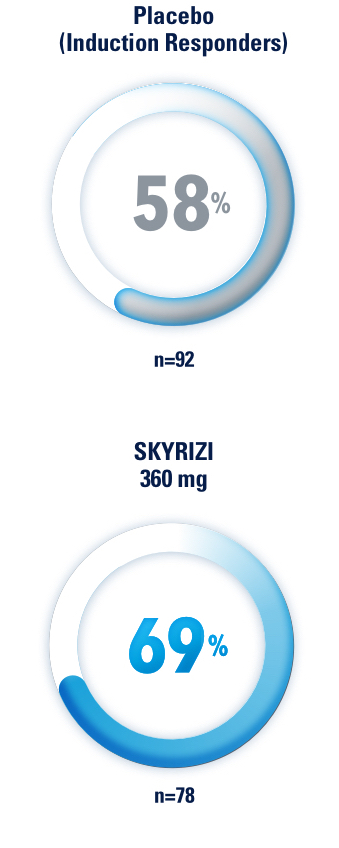INDUCTION
The IL-23 inhibitor from AbbVie indicated for the treatment of moderately to severely active Crohn's disease (CD) in adults.1
RELIABLE DOSING SCHEDULE
AND THE OPTION TO
SELF-ADMINISTER AFTER TRAINING
RELIABLE DOSING SCHEDULE
SC Injection every 8 Weeks at Home or in the Office After 3 IV Infusions1

3 IV Infusions
(600 mg per dose)
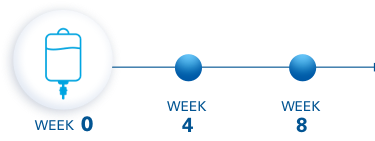
Administer each dose of SKYRIZI
over at least 1 hour
SKYRIZI 600 mg/10mL: NDC Code 0074-5015-01 (Carton of 1)
IV=intravenous


MAINTENANCE
Only 6 SC Doses
Per Year
(180 mg/1.2 mL or 360 mg/2.4 mL)

On-Body Injector (OBI) with SKYRIZI
prefilled cartridge for SC injection
Use the lowest effective dosage to maintain therapeutic response
SKYRIZI 180 mg/1.2 mL: NDC Code 0074-1065-01 (Kit)
SKYRIZI 360 mg/2.4 mL: NDC Code 0074-1070-01 (Kit)
SC=subcutaneous

ADMINISTRATION CONSIDERATIONS: SKYRIZI is intended for use under the guidance and supervision of a healthcare professional (HCP). SKYRIZI vial for intravenous administration is intended for administration by an HCP. Prior to starting therapy, please refer to the Dosage and Administration section of the Prescribing Information for complete information on how to initiate, prepare, and administer SKYRIZI. Patients may self-inject SKYRIZI using the on‑body injector with prefilled cartridge after training in subcutaneous injection technique. Provide proper training to patients and/or caregivers on the subcutaneous injection technique of SKYRIZI according to the Instructions for Use.1
Lab Monitoring
Treatment Considerations in Crohn's Disease1
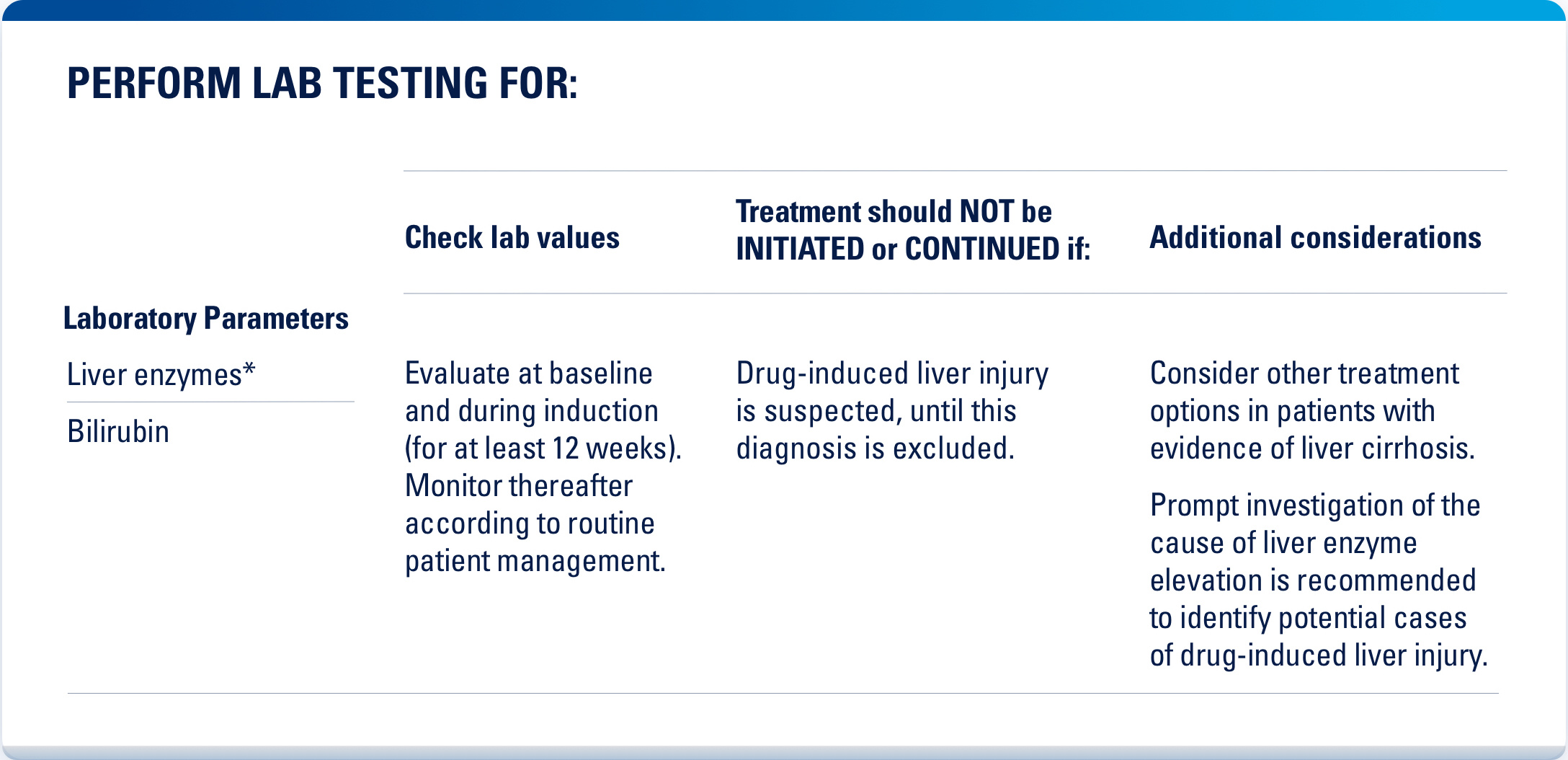
Infections: SKYRIZI may increase the risk of infections. Instruct patients to seek medical advice if signs or symptoms of clinically important infection occur. If such an infection develops, monitor the patient closely and do not administer SKYRIZI until the infection resolves.
Tuberculosis (TB): Evaluate for TB infection prior to initiating treatment with SKYRIZI.
Vaccinations: Complete all age-appropriate vaccinations according to current immunization guidelines prior to initiating treatment with SKYRIZI.
EXPLORING THE ON-BODY INJECTOR (OBI)
Single-use SC Injector with SKYRIZI Prefilled Cartridge
DESIGNED WITH YOUR PATIENTS IN MIND
COMPACT SIZE
Small enough to fit in the palm of the hand
HANDS-FREE
While adhered to the abdomen or thigh and after activation, patients can do moderate physical activities such as walking, reaching and bending
HIDDEN NEEDLE
Discreet injection so patients don't see the needle
DOSE DELIVERED IN 5 MINUTES
Following preparation steps
AUDIO & VISUAL CUES
Notifies when full dose has been delivered
Patient Reported Experience on Using the OBI (On-Body Injector)2,3
In a questionnaire, patients reported an experience with self-administration at home using the OBI after receiving training from their HCP

DESCRIPTION: In an open label, two-arm multicenter study evaluating the SKYRIZI On-Body Injector (N=46), analysis for patient experience was reported through questions within 6 domains of a validated Self-Injection Assessment Questionnaire (SIAQ). Data shown includes percent of adult patients that reported easy/very easy, very/extremely easy, or very/extremely confident for 3 questions within the ease of use and satisfaction SIAQ domains at Week 8 (N=39). All data reported are as observed. The SKYRIZI OBI was not evaluated in the primary analyses of the Phase 3 Clinical Trials in CD.2
ADMINISTRATION CONSIDERATIONS: SKYRIZI is intended for use under the guidance and supervision of a healthcare professional (HCP). Patients may self-inject SKYRIZI using the on-body injector with prefilled cartridge after training in subcutaneous injection technique. Provide proper training to patients and/or caregivers on the subcutaneous injection technique of SKYRIZI according to the Instructions for Use.1
The SKYRIZI "Instructions for Use" includes the full set of detailed instructions on the preparation and administration of SKYRIZI. Instruct the patient to read before administration.
5 P's TO HELP YOUR PATIENTS REMEMBER
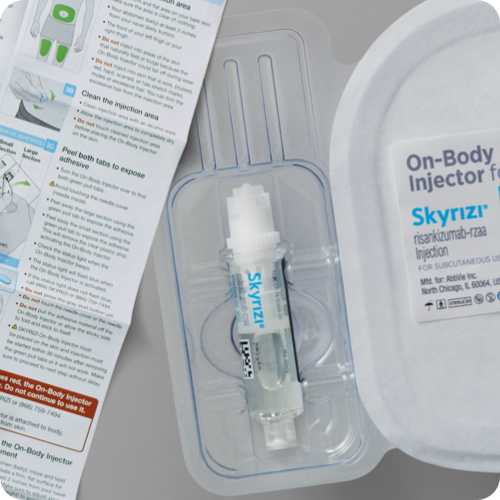
1 PREPARE
Gather alcohol wipes, gauze pads or cotton balls, and sharps disposal container.

2 PICK
Pick a place on the thigh or abdomen to inject.
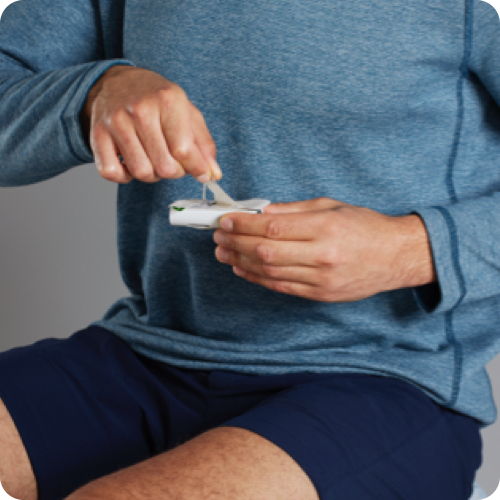
3 PEEL
Peel the 2 green pull tabs to reveal the adhesive without touching the needle.
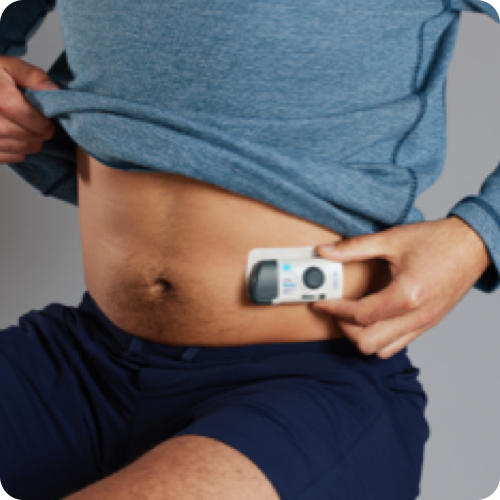
4 PLACE
Place the OBI onto the skin. Ensure that the status light is visible.
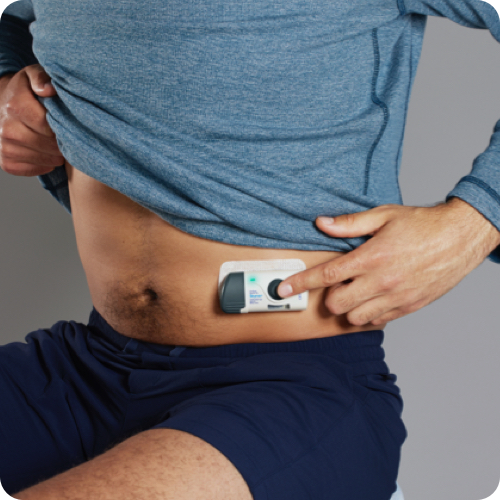
5 PRESS
Press and release the gray start button to begin. A flashing green light will appear. When the injection is complete, the green light goes solid.
ADMINISTRATION CONSIDERATIONS: SKYRIZI is intended for use under the guidance and supervision of a healthcare professional (HCP). Patients may self-inject SKYRIZI using the on-body injector with prefilled cartridge after training in subcutaneous injection technique. Provide proper training to patients and/or caregivers on the subcutaneous injection technique of SKYRIZI according to the Instructions for Use.1





